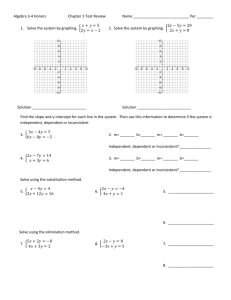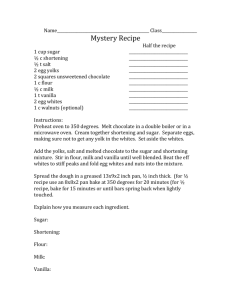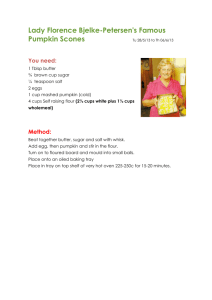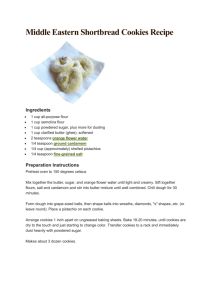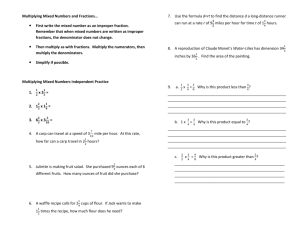Cookie Stoichiometry A recipe is very similar to a chemical equation
advertisement
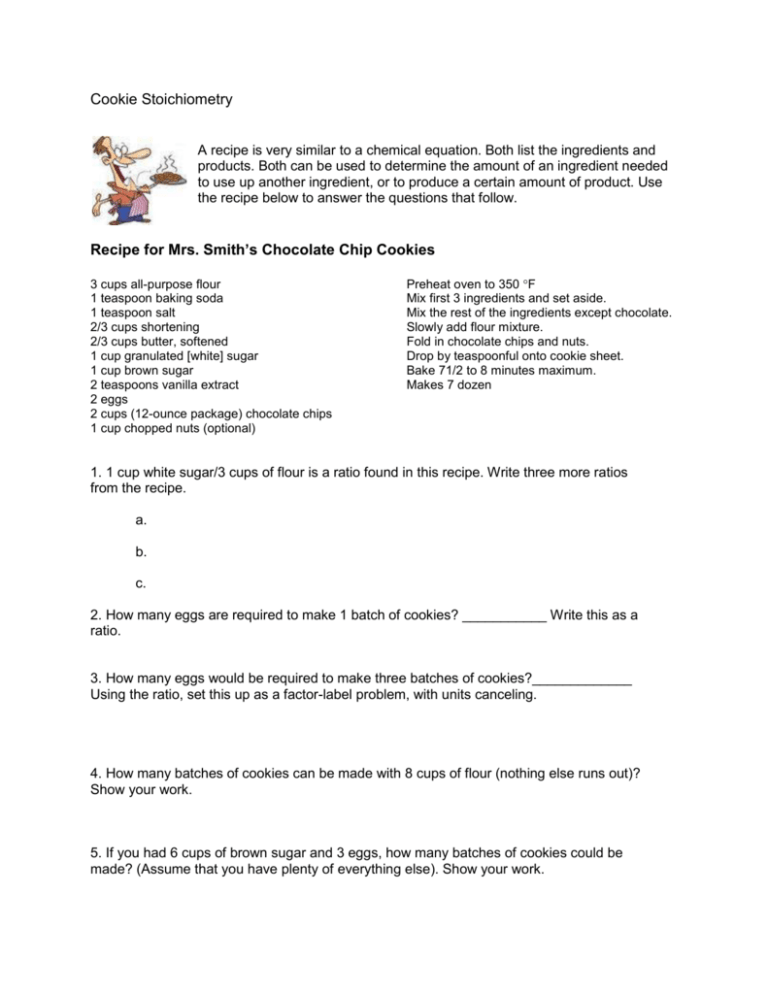
Cookie Stoichiometry A recipe is very similar to a chemical equation. Both list the ingredients and products. Both can be used to determine the amount of an ingredient needed to use up another ingredient, or to produce a certain amount of product. Use the recipe below to answer the questions that follow. Recipe for Mrs. Smith’s Chocolate Chip Cookies 3 cups all-purpose flour 1 teaspoon baking soda 1 teaspoon salt 2/3 cups shortening 2/3 cups butter, softened 1 cup granulated [white] sugar 1 cup brown sugar 2 teaspoons vanilla extract 2 eggs 2 cups (12-ounce package) chocolate chips 1 cup chopped nuts (optional) Preheat oven to 350 F Mix first 3 ingredients and set aside. Mix the rest of the ingredients except chocolate. Slowly add flour mixture. Fold in chocolate chips and nuts. Drop by teaspoonful onto cookie sheet. Bake 71/2 to 8 minutes maximum. Makes 7 dozen 1. 1 cup white sugar/3 cups of flour is a ratio found in this recipe. Write three more ratios from the recipe. a. b. c. 2. How many eggs are required to make 1 batch of cookies? ___________ Write this as a ratio. 3. How many eggs would be required to make three batches of cookies?_____________ Using the ratio, set this up as a factor-label problem, with units canceling. 4. How many batches of cookies can be made with 8 cups of flour (nothing else runs out)? Show your work. 5. If you had 6 cups of brown sugar and 3 eggs, how many batches of cookies could be made? (Assume that you have plenty of everything else). Show your work. 6. The ingredient that runs out first is called the limiting reactant. In #5 above, which is limiting, the brown sugar or the eggs? 7. Which of the two ingredients in #5 above determined how many batches of cookies could be made? ------------------------------------------------------------------------------------------------------------------------------Look at the following equation: N2 + 3H2 2NH3 8. If the equation is read like a recipe, then ratios can be made of moles of each ingredient. How many moles of H2 are required to react with 1 mole of N2? 9. How many moles of NH3 can be made from 3 moles of N2? Use ratios to show your work. 10. It is not practical to look at the equation in terms of moles, because we can’t measure moles directly. How might you determine how many grams of N2 would be needed to make a certain amount of NH3?



